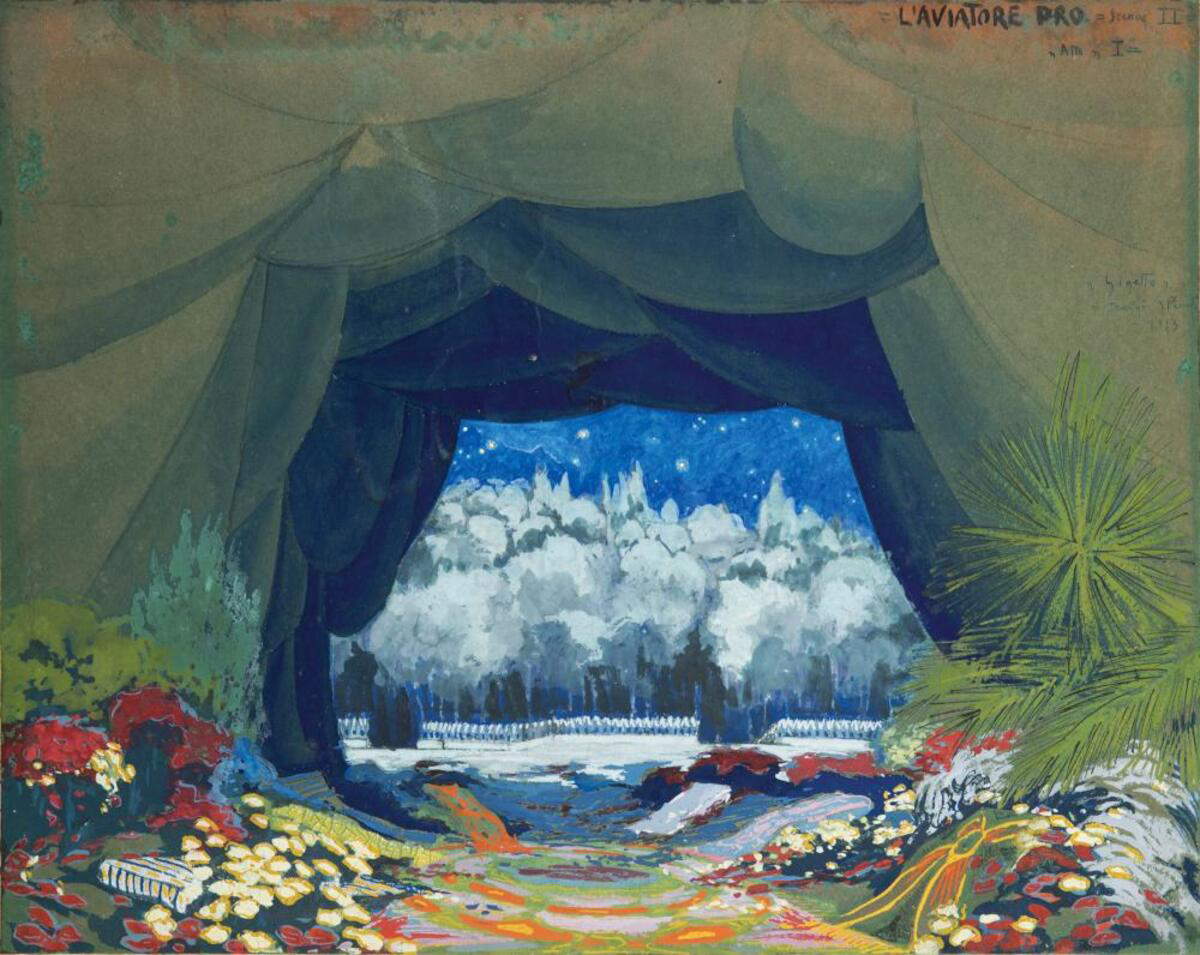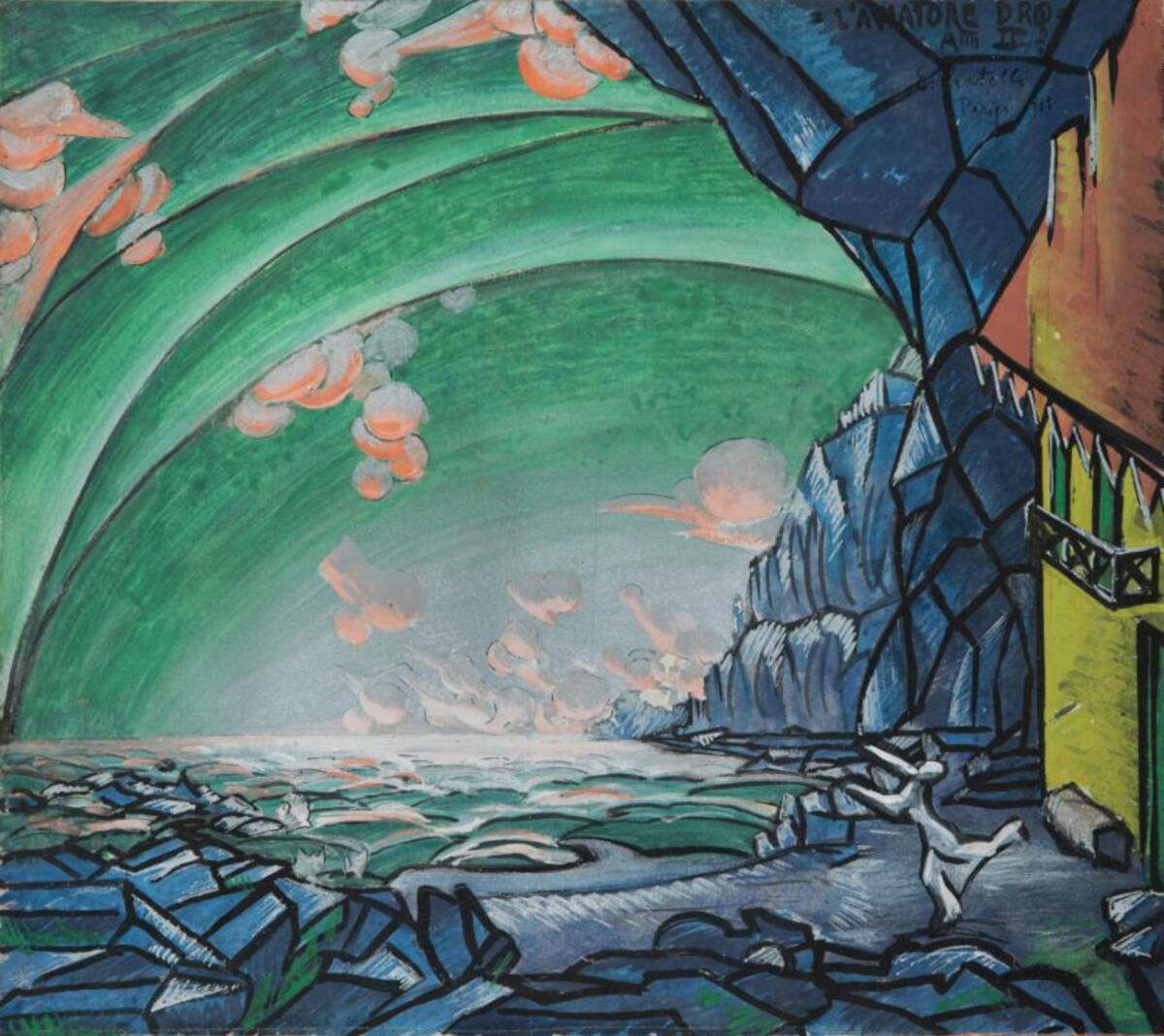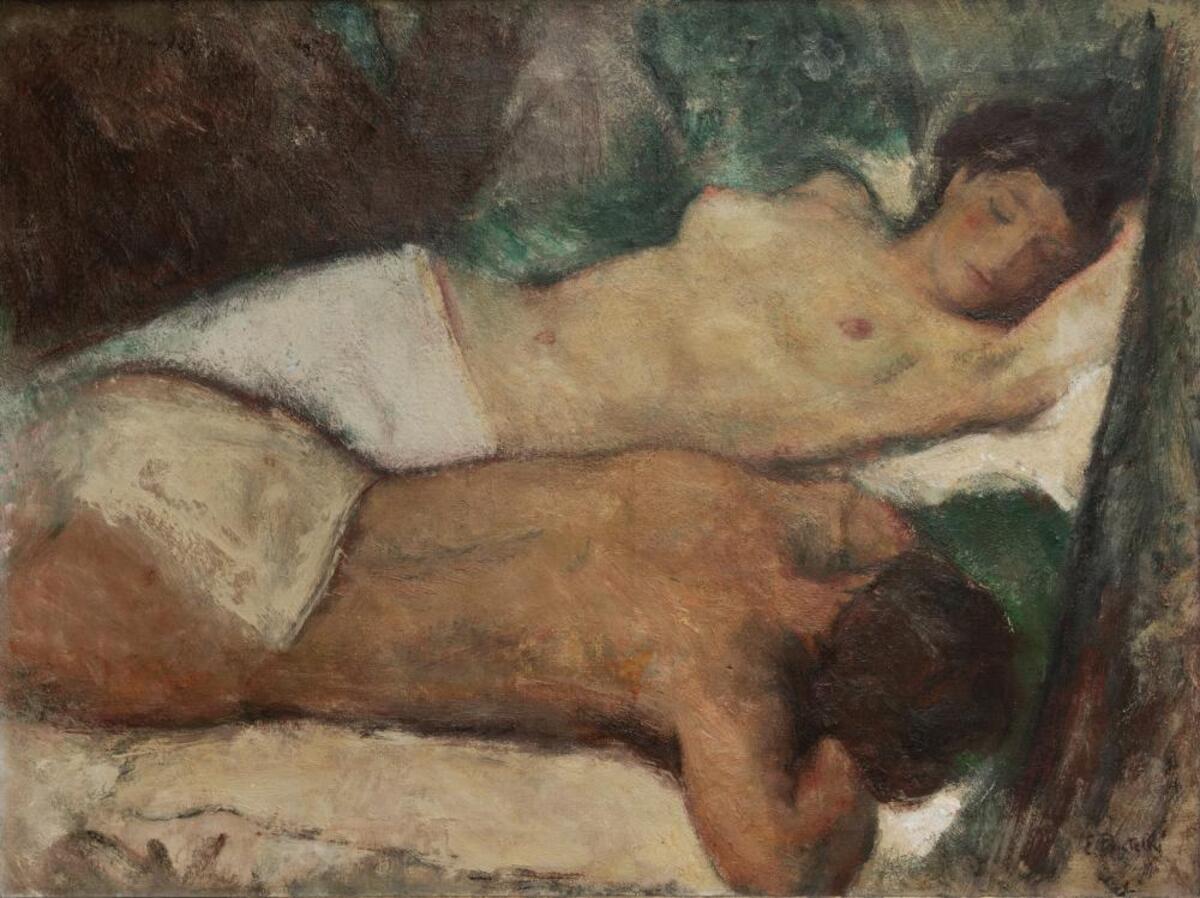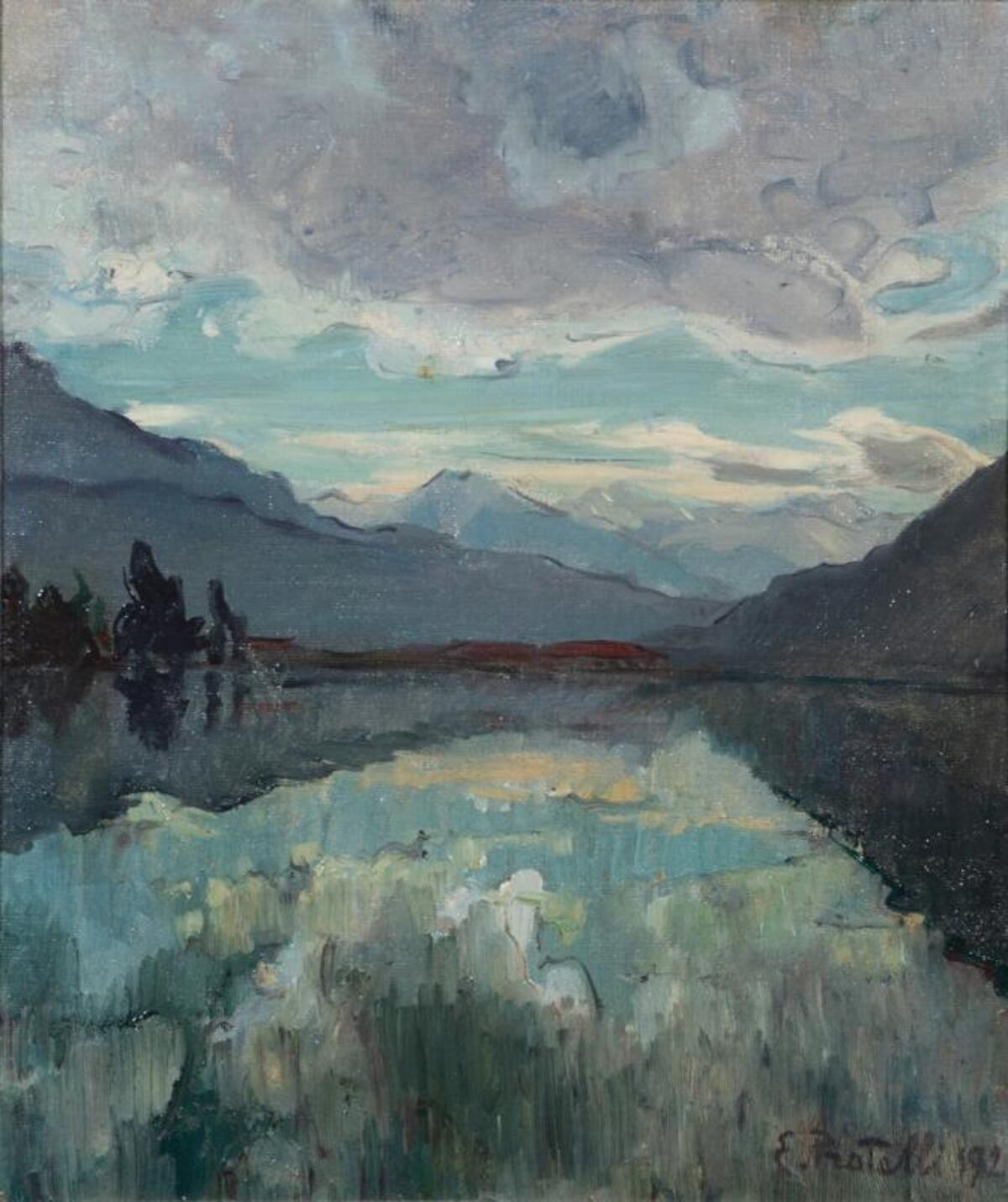From April 17 to May 13, 2025, the CMC - Centro Culturale di Milano will host a retrospective exhibition dedicated to EsodoPratelli (Lugo, 1892 - Milan, 1983), a multifaceted artist and protagonist of early 20th century Italian painting. The exhibition, curated by Elena Pontiggia and entitled Esodo Pratelli. From Futurism to the “Novecento” and Beyond, opens on Wednesday, April 16 at 6 p.m. and offers a chronological path through the artist’s entire production: about fifty works, including paintings, ceramics, tapestries, sketches, documents and photographs, reconstruct the complex human and creative story of an author capable of traversing the most significant movements of the last century with a personal and consistent voice.
Born in Lugo di Romagna in 1892, Pratelli initially trained at the School of Drawing and Plastics in his hometown, then continued his studies in Rome at the Accademia di Via Ripetta. In his early work, the influence of Symbolism and authors such as Klimt and Beardsley can be perceived, an explicit reference for some of his early ceramics, including the polychrome majolica Summer in the Night (1911), described in correspondence with his cousin, the Futurist composer Balilla Pratella. He would maintain a dense exchange of correspondence with him throughout his life, nurturing a deep human and intellectual relationship.
In 1913-14, during a stay in Paris, Pratelli came into contact with the European avant-garde milieu and met Boccioni, Carrà, Severini, Marinetti, Gris, Delaunay, and Sironi. It was in those years that he adhered to futurism, as evidenced by the canvases Frammento della primavera (1913), with its broken lines and swirling segments, and especially the set and costume sketches for L’aviatore Dro, a futurist opera by his cousin Balilla, first staged in 1920. The synthetic stroke and tension toward the infinite that characterize these drawings are also reflected in his pictorial works of the period, marked by an exploration of movement and visual energy.


Called to arms in 1915, Pratelli did not resume artistic activity until 1919, settling in Milan. In the 1920s he joined the Novecento Italiano movement, joining the “nursery of young forces” promoted by Margherita Sarfatti and participating in the I Mostra del Novecento Italiano at the Permanente in Milan in 1926. In those years he formed a decisive friendship with Mario Sironi, whose portrait he painted in 1928.
At the same time, Pratelli devoted himself to teaching: from about 1924 to 1934 he directed the School of Applied Art at the Castello Sforzesco in Milan. In 1925, with Sironi, Sarfatti, Funi and Carrà, he proposes the establishment of a Higher Council for Modern Art, reflecting an active engagement in the cultural debates of the time. He was appointed secretary of the Fascist Fine Arts Union of Milan in 1927, and the following year of Lombardy. He was present at the Brera Biennale with the works Giulia and Laura and Paese toscano, and participated in the Venice Biennale in 1928, 1930, 1932 and 1934. He also exhibited at the I Quadriennale in 1931 and at the Exhibition of Contemporary Italian Painting at the Baltimore Museum.
In 1932, on the occasion of the tenth anniversary of the March on Rome, Pratelli curated three rooms at the Fascist Revolution Exhibition at the Palazzo delle Esposizioni in Rome. Soon after, however, a radical change took place: in 1935 he left Milan and moved permanently to Rome, devoting himself to cinema as a screenwriter and director. Away from exhibitions and teaching, he nevertheless remained faithful to his artistic research, which he resumed more continuously in the second half of the 1950s.
The exhibition at the CMC fully restores this human and professional parabola, emphasizing the heterogeneity of the languages employed: Pratelli experimented with different techniques, from oil to tempera, from watercolor to charcoal, from ceramics to tapestry, always maintaining a refined quality of the stroke, an elegant linearity and a sober but incisive chromatic range. A constant element is the presence of nature, which appears even where it is not the central subject, becoming an invisible but perceptible force. Sometimes it manifests itself in landscapes, others in weather or domestic interiors, always with a symbolic value.
In the 1930s, Pratelli gradually began to detach himself from the language of Novecento Italiano to embrace a more intimate and narrative vision. Works such as Estate (1930) and La favola del bosco (1931) mark a turn toward a magical realism, in which nature and everyday life merge into suspended, fairy-tale atmospheres. After a period of silence, the works of the 1950s and 1960s focus on familiar, intimate themes, as in Cat on the Stove(1957) and The Box of Forgotten Things (1967), in which the artist seems to take refuge in the small details of memory and home.
“She deserves to be known for the intensity of so many of her outcomes, but also for the esprit de finesse that runs through her,” the curator argues in relation to Pratelli’s painting. “His delicate colors, his refined compositions of figures, his confidential themes, his cityscapes and landscapes without adjectives, his entire stylistic trajectory, in short, from Symbolism to Futurism to the ”Novecento,“ to which must be added his last decades that are anything but senile, are too valuable to be relegated to the Box of Forgotten Things, as the artist titles a painting from 1967, which is also a transparent metaphor for his expressive story.”
Completing the exhibition project is the monograph edited by Elena Pontiggia and published by Silvana Editoriale, the most comprehensive dedicated to Pratelli. The volume collects more than one hundred color plates and numerous documents, including unpublished correspondence with artists, critics and friends, precisely outlining the profile of a secluded but decisive author, capable of traversing seasons and styles without ever losing his own voice. The exhibition is also made possible thanks to the support of the Massimo and Sonia Cirulli Foundation, which has granted important loans of works. A rare opportunity to rediscover an artist whose work traversed and reflected the tensions and dreams of the Italian twentieth century.


 |
| Esodo Pratelli, a protagonist of the 20th century on display at the Milan Cultural Center |
Warning: the translation into English of the original Italian article was created using automatic tools. We undertake to review all articles, but we do not guarantee the total absence of inaccuracies in the translation due to the program. You can find the original by clicking on the ITA button. If you find any mistake,please contact us.